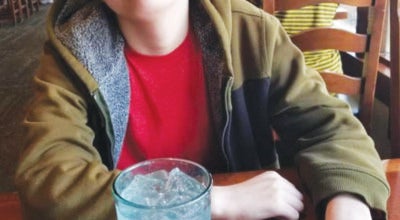The Literary Corner: Renegade Writer’s Guild
Published 9:48 am Thursday, October 7, 2021
|
Getting your Trinity Audio player ready...
|
Corn Shucking
By Linda H. Barnette
When given the topic, “Harvest,” to write about, my mind jumped back to about 70 years ago when my parents, grandparents, and I attended a corn chucking celebration at the home of one of Daddy’s uncles on Becktown Road not too far from where Daddy grew up. All I remember is that there were long tables filled with food and lots of people, cousins and so on. All we did was share the meal and visit, so the actual shucking of the corn crop had been completed by the immediate family before the party took place.
Because of that memory, I decided to do some research on the history of corn shucking in the South. Apparently, this was an annual event on large farms and plantations. The term “shucking” referred to the process of separating the husks, or outer layers of the corn cob to expose the grain, the edible part. This took place after the ears of corn had been pulled from the stalks. The ears with the stalks still attached to them were then stored in corncribs until the time for shucking. This was done so that the actual corn would not dry out.
For the farm workers, and earlier, the slaves, corn shucking was a big celebration, a time away from the everyday drudgery of their work. After the shucking, there would be a big party with a huge meal and singing and dancing. Often prizes were given to the one who shucked the most ears.
Some historians think that this practice originated with the Native Americans long before European settlers came here and that the giving of the prize to the person who found the red ear also started with the natives.
In our area, the Moravians who settled in Forsyth County were opposed to this entire event because they felt that partying and drinking were morally harmful to young people.
So just like barn-raising and quilting parties, corn shucking is a thing of the past. I enjoyed the one I attended as well as learning the history of it.
“The Holy Spirit’s Work in the Material World”
By Stephanie Williams Dean
The work of the Holy Spirit is not just limited to man. With a much wider scope, the Spirit is active in the material universe, as well. The Spirit’s work in the material world is threefold. Today, let’s take a look at one way the Spirit works in this way.
One, a study of all names of the Holy Spirit teaches us that one name is the breath of Jehovah. So we learn from the following passage that all hosts of heaven, and all stellar worlds were created by the Holy Spirit:
Psalm 33:6 reads, “By the word of the Lord were the heavens made; their starry host by the breath of his mouth.” (NIV)
We’re also taught that the creation of both the physical/material frame of man and life itself are attributed to the work of the Holy Spirit.
In Job 33:4, we read, “The Spirit of God has made me; the breath of the Almighty gives me life.” The Holy Spirit is responsible for the creation of man. (NIV)
However, creation took place in and through the Son of God. We learn this from the following scriptures:
“For by him all things were created; things in heaven and on earth, visible and invisible, whether thrones or powers or rulers or authorities, all things were created by him and for him.” Colossians 1:16. (NIV)
And Hebrews 1:2 reads, “but in these last days he has spoken to us by his Son, whom he appointed heir of all things, and through whom he made the universe.” (NIV)
Looking back at the Psalm 33:6 passage, we see that both Word and Spirit are connected to creation.
Now let’s look back at Genesis 1:1-3 which reads, “In the beginning, God created the heavens and the earth. Now the earth was formless and empty, darkness was over the surface of the deep, and the Spirit of God was hovering over the waters.”
If we look at all these Biblical passages, collectively, it’s obvious that the Holy Spirit, Son, and Father are all active in the work of the creation.
Clearly, our Father works in His Son and through His Spirit.
“A Frog’s Tale”
By David R. Moore
She screamed and slammed the toilet seat down. Just seconds earlier, a frog stared at her from the toilet. She must call for help! Police? EMS? Fire department? Family? She decided to ring me, who in her mind was someone who may come over to help without doubling over with laughter. With panic in her voice, she pleaded for help.
“There is a frog in your toilet? Ah, how big is it?”
“It’s BIG!”
“How did it get in your toilet?”
“I don’t know!”
“Well, frogs around here are not poisonous. Just put on some gloves, catch him, and release him in your yard,” I suggested.
She didn’t like the idea but said she would try after she calmed down. She phoned back and told me the frog froze after she raised the toilet seat, but he dove and swam out of sight into the toilet trap when she moved to catch it.
I rubbed my chin and, using my best sage advice, “He probably came up from the pipes. I don’t think he came in through your front door. Just flush him on down. That will solve your frog problem.”
She called early the following day. “He’s back!”
She related how she flushed several times the night before, went to bed feeling happy the frog problem was swept away, only to scream again when she saw him again in the toilet at dawn’s light. Later, she tried to catch him using a big stainless steel mesh strainer from her kitchen, but the frog was quick and dove into the toilet trap again.
“Well, obviously, this is not your ordinary toilet frog. This guy seems pretty smart, quick, and uses his hands and feet to grip the sides of the porcelain tank. We won’t be able to flush this problem away. How about this idea? Create a ramp made of cardboard or something similar so he can climb out of the toilet. Once out, he should be easy to catch, but barricade the bathroom door with towels so he can’t escape the room,” I proposed.
She buzzed me later that day to say there was no sign of the frog climbing out of the toilet and believed the lid must be down for the frog to show himself and that may take hours. She asked if I would come over to evaluate the situation, emphasizing that she can’t use that toilet until he is gone.
When I arrived, I found she had removed the crude cardboard ramp that the frog did not use and had the toilet lid down. I put on gloves and slowly raised the cover. Yep, there he was. He looked like a leopard frog to me, but I don’t know frog species. He wasn’t BIG, but only a few inches in length. I had confidence I could catch him. Sadly, the frog dove and swam to safety as soon as I made a move toward it. He was fast, indeed. This situation was going to be more challenging than I thought.
Thinking hard for a change, I forced my old mind to come up with a new idea. If I could block the toilet trap to prevent froggy’s escape, it may be easy to catch him. Unfortunately, some details needed working out. First, the frog had to be out of the trap before the blockage. What do you use to block the trap? How do you block the toilet trap when he dives as soon as you move towards him? I went back home to ruminate on the problem and performed a cursory inventory of items in my garage. The toilet plunger may work, but I rejected that idea because of the plunger’s size and how you have to maneuver it over the opening. I thought the frog would be quicker. I found a plastic slat that was three feet by four inches and ¼ inch wide. Using my toilet as a guide, I rounded the end of the slat to block the trap effectively. I phoned her and told her my plan.
The following day, I arrived to find she had done what I had asked. Instead of closing the toilet lid, she placed cardboard over the seat, leaving a one-inch gap at the back. I speared the slat down through the opening to the trap with the assumption the frog came back. We removed the cardboard and saw the frog squirming his way past the slat, too fast for me to grab him. The size and curvature of her toilet’s bottom were different from mine, and the frog was able to squeeze through a narrow gap the slat did not close. The dimensions were such that resizing the slat would not work.
So, my next idea focused on the frog’s desire to be in or under shelter. Froggy came out only when the toilet lid was down or cardboard was over the seat. She suggested an empty ½ gallon almond milk carton and cut a two-inch by two-inch hole on its side. I crammed it into the side of the toilet, so the opening was near the water’s edge. She placed the cardboard cover of the seat with the idea the frog would come out again and find a more pleasant cavity for his safety. The opening on the carton could be quickly closed by a hand, and with the frog inside the carton it could be ushered off the premises.
When I arrived the next day, I was dismayed as she expressed doubt in my frog-catching ideas. A few days had already elapsed with no success, and she was tired of using her other bathroom. I had to agree, and thoughts of being outsmarted by a frog also passed through my mind, so that is why I brought my stainless steel mesh strainer, more petite than hers but perhaps more maneuverable, and a fish tank net for Plan B in case the carton idea was a dud.
“It is going to take two people,” I told her and handed her the fishnet.
I put on my nitrile gloves and informed her of the plan. She was to remove the cardboard cover, and I would close the opening on the carton and catch the frog. If he is not in the carton, we will capture him with the fishnet. She carefully removed the cardboard cover. There sat the frog next to the carton. He looked at me, and I looked at him. Instantaneously he dove as I plunged the strainer into the toilet. He diverted his course to avoid the wire mesh, but she had already stuck her hand down to block the trap. The frog made a quick U-turn giving me time to stick my other hand into the trap, blocking it. With her hand now free, she was now able to focus on using the fish net. However, our efforts to catch him with the fishnet or strainer were futile. I have never seen a frog so fast and agile. I tried to catch him numerous times, but his body was too slippery. After several moments of frenzy efforts by all, he finally tried to squirm his way through my fingers that were blocking the trap. I then was able to cup him between my hands and capture the little guy. We escorted him from the house to the nearby pond. In just two hops, he dove into the water with a huge story to tell his froggy friends. It was a happy ending. So, if you ever find a frog in your toilet you should call for help, but please do not phone me.
“Attitude”
By N.R. Tucker
Today was a demanding day. First, I donned my battle gear to prevent the encroachment of additional mass. I strengthen the alliance with the feathered creatures who serve as sentinels in my woods and gathered sustenance from the fields and forests. Soteria joined me in my daily constitutional, during which she quested for tribute left by those creatures who wished to walk in her domain. Next, it was time to smite the evil threatening my castle. Then I made way to the village where I listen to the wisdom of my advisors. I stopped by the apothecary to buy potions and went to the market to trade for commodities I couldn’t gather myself before returning to my fortress.
Now, doesn’t that sound better — more exciting — than I did my morning workout, fed the birds, gathered food from the garden, walked the dog, cleaned the house, met friends for lunch, and finally, I stopped by the pharmacy and grocery store on the way home?
RWG Literary Corner
For more information on Renegade Writers Guild, visit www.renegadewritersguild.wordpress.com.
Submit a favorite memory of life in Davie County. Story should be typed and not more than 250 words. Please include your name and phone number or email address. RWG retains reprint rights. Email to lhb1@yadtel.net.





